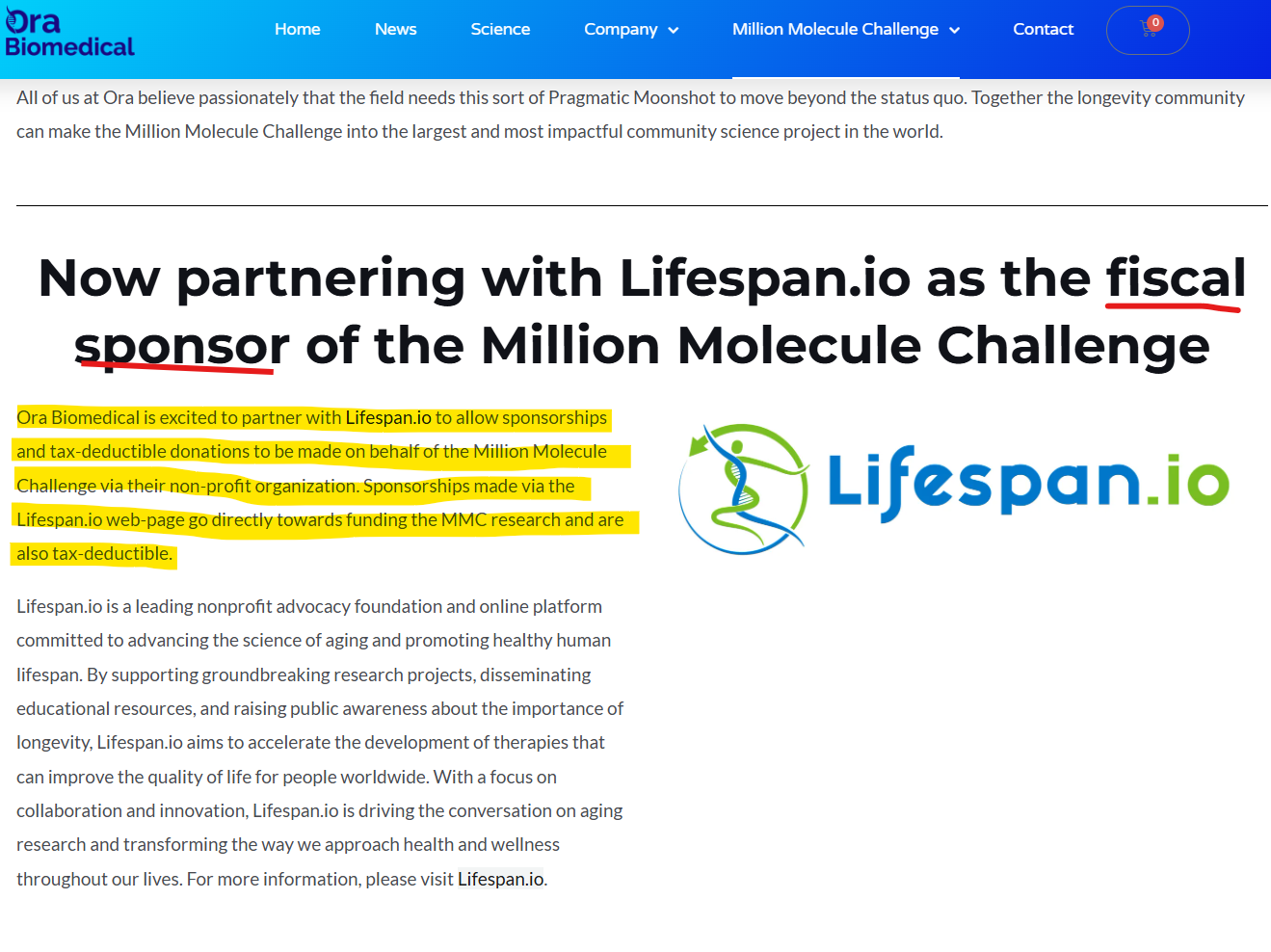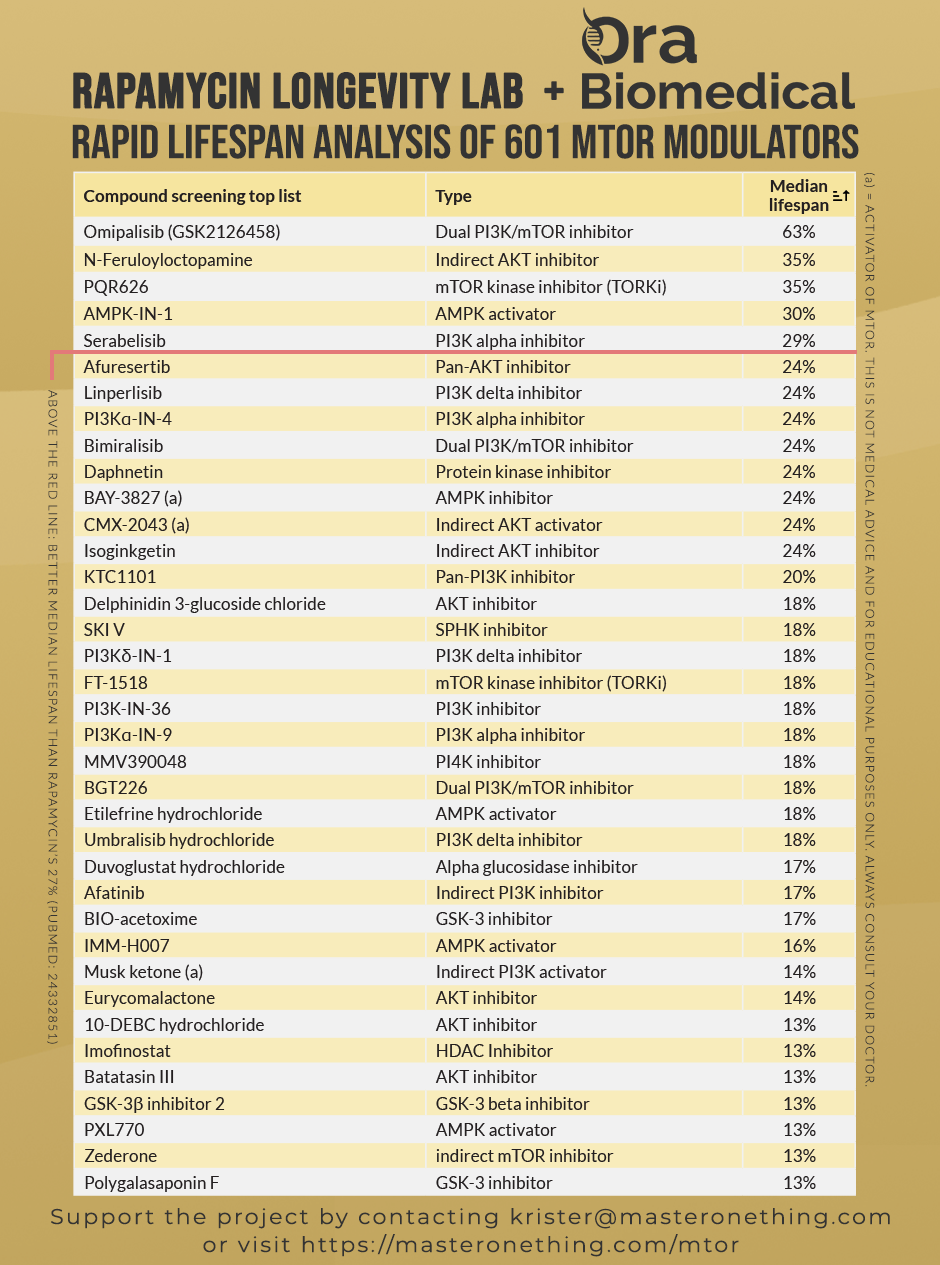I have already learned quite a bit from my experiments with Doxycycline and GSK 2126458 and I hope the following experiments that now are undertaken will give us more useful information. Doxycycline is a tetracycline antibiotic and it is a known life-extender in C. elegans. Its mechanism is not primarily antibacterial but is thought to involve mitochondrial inhibition. By mildly stressing the mitochondria (a concept known as mitohormesis), the organism upregulates its defense and repair mechanisms, leading to increased longevity. Doxycycline is a compound that has an established baseline effect, which gives us a perfect starting point for combination therapy.
GSK 2126458 (Omipalisib) is a potent, dual PI3K/mTOR inhibitor. The PI3K and mTOR pathways are central hubs for sensing nutrients and regulating growth, metabolism, and aging. Inhibiting them is a well-known geroscience approach to extend lifespan.
-
Doxycycline: Targets mitochondrial function (mitohormesis)
-
GSK 2126458: Targets nutrient-sensing pathways (PI3K/mTOR).
-
these pathways may work additively or even synergistically to improve healthspan. This is the dream and gold standard approach in additive and synergistic pharmacology: hitting multiple targets for an even greater effect than we get when we add two effects on top of each other.
-
The “Problem” we face is Too Much Success, and this i s a classic and well-known issue in survival experiments. The experiment has a predefined endpoint (e.g., when 90% of the control group has died or after a maximum in amount of days). If a treatment is so effective that a large portion of the population is still alive at this point, you get “right-censored” data. and give us a Statistical Challenge. While it’s a “good problem to have,” it makes calculating a precise median lifespan difficult or impossible. The true effect is likely even larger than what can be measured. A proper analysis would require specialized statistical methods (e.g., Cox Proportional Hazards model) that can handle censored data to show the significant survival advantage.
-
The combination doxycycline and GSK 2126458 isn’t just mildly effective; it’s so robust that it broke the standard measurement system for the assay.
Timing is everything in interventions. The C elegance developmental phase (larval stages L1-L4) is a period of intense growth, energy consumption, and mitochondrial activity. A high dose of a mitochondrial inhibitor (doxycycline) during this critical window likely disrupts essential energy production, leading to developmental delays, fragility, or even death. The worm is trying to build itself, and you’re limiting its primary energy source.
**C Elegance being more resiliant when they are given doxycycline from the start of adulthood indicates that we deal with The Concept of Hormesis. Where a low dose of a stressor is beneficial, but a high dose is harmful.
Possible explanation: In adulthood, the primary goal shifts from growth to maintenance. By applying the mitochondrial stressor after development is complete, you gently kick the maintenance and repair systems (e.g., autophagy, unfolded protein response) into high gear without the negative consequences of stunting growth. This enhances resilience and ultimately extends lifespan.
My key take aways are:
Powerful Synergy: The GSK 2126458 + Doxycycline combo appears to be highly effective, warranting replication and rigorous statistical analysis of the censored data.
Timing is Crucial: this identifies a critical treatment window for the GSK 2126458 + Doxycycline combo
The administration protocol must be carefully designed to avoid developmental toxicity and maximize the pro-longevity hormetic effect in adults.
it will be interesting to see what others have learned from similar experiments and with different spieces of animals.

